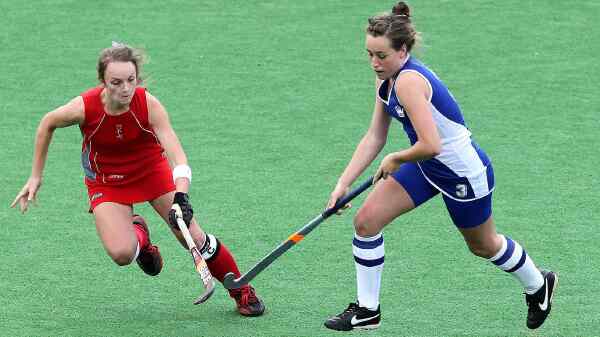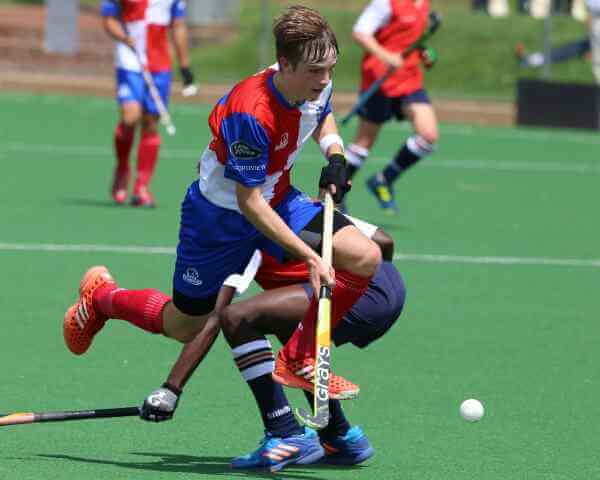Hockey is the 3rd most played sport in the world. Players can enjoy Hockey from various dimensions, such as Ice Hockey, Field Hockey, and so on. While players are well-informed in several field hockey tactics, they often lack knowledge about scooping. Do you know, “What is a scoop in field hockey?”
In simple terms, a “scoop” is a field hockey tactic in which a player raises the ball above the ground with their sticks and passes it to a team member to move the ball quickly across the field or prevent a defender.

Read the complete article to learn more about scoop in Field Hockey. Aside from that, readers will discover a lot more about field hockey, scoop, and answers to some FAQs. So, let’s start.
What is Field Hockey?
Table of Contents
Before jumping into scooping, knowing a bit about field hockey is vital. So, this section will provide a basic overview of field hockey.
Field Hockey is not a recent invention. People have been playing field hockey since ancient times, especially in Ancient Greece and Egypt. Over time, it has become more popular in Africa, Asia, and Europe. It is now the 2nd largest team sport in the world.
- Team composition: In this sport, there are two teams, each with 11 members: 10 players on the pitch and 1 goalie.
- Positions: Field Hockey positions include forward, defender, midfielder, sweeper, and goalie. While some mentors like a 4-3-3 formation (four attackers, three midfielders, and three defenders), others prefer a 5-3-2 formation. In all versions, each side will have only one goalie.
- Purpose of the sport: Field hockey sticks and balls are two essential pieces of field hockey equipment. Click here to find the Best field hockey sticks for midfielders and Best Field Hockey Sticks for Defenders.
In field hockey, the main aim of each team is to achieve more goals with their sticks by getting the ball into the opponent’s goal post within a specific time duration. However, the goalie is the only team member who can prevent the ball with any part of their body. Teams change their center pass after each goal.
- Time duration: A field hockey match lasts 60 minutes. Prior to 2019, the time duration was 70 minutes, and players got a 5- minute break after the first 35 minutes. Currently, Field hockey consists of four quarters of 15 minutes each. Players get a 2- minute break after the first and third quarters.
However, if the players are unable to complete the match within the time limit, they must play overtime. During this period, the team who scores first will be declared the winner. Teams must take penalty shots if they fail to achieve goals in overtime.
What is a scoop in field hockey?

A “scoop” refers to a field hockey technique in which players raise the ball above the ground with their sticks and pass it to a team member to move the ball quickly across the field or prevent a defender.
To undertake a scoop, the player raises their field hockey stick at an angular position and then rapidly lowers it to touch the ball close to the ground. So, the ball lifts into the air and moves forward because of the applied force. The player may then control the ball with their stick to anywhere they want it to go.
Players usually execute Scoops for two purposes: passing and shooting.
- Passing: The importance of accurate passing is indescribable in field hockey. Passing refers to a player’s ability to direct the ball in diverse directions while using a stick. Players frequently employ the scoop method to transfer the ball to a team member with a higher opportunity to score goals due to his advantageous position.
- Shooting: It refers to a powerful hit made by a player to guide the ball across large distances, boosting the possibility of other members scoring. When a player scoops the ball, it indicates his attempt to defeat the goalie and to take the ball into the goalpost.
While scoop can give several benefits to players, it also has certain disadvantages. If a player fails to apply the scoop correctly, he will miss the ball, and other members will seize possession. Furthermore, if a player misses the ball, the person may hit another player with their stick, resulting in a penalty or possibly suspension from the match. Therefore, proper scooping practice is essential before application.
How to scoop?
One can exercise scoop by following the below steps:
- Place the right hand at the bottom of the stick’s grip and put the left hand on the edge of the grip. One can put the finger in or out of the stick, depending on one’s preference.
- Have a tight grip with the hands
- Bend your knee and make a 90-degree angle by moving the edge of the stick to your underarm. It will give one the maximum power. Because one will get power from the leg, core, and hand from the lower position.
- Get the ball on the stick
- Push the ball up as far as possible you can
FAQ
- What does Jink Steal in Field Hockey mean?
Jink Steal, also known as 3D skill, is a tricky technique in field hockey in which a player grabs possession of the ball in front of another opponent player and quickly delivers the ball to another team member. The purpose is to seize the ball’s control from the opponent.
- What are the three main types of passes in field hockey?
Push Passes, Drives, and Sweeps are three vital passes in field hockey. Field hockey is a team sport. So, each team member has to learn these types of passes to score more goals properly.
Final verdict:
Scoop is a skill that gives players numerous advantages in tackling opponents. Unfortunately, many people are unaware of the scoop in field hockey. So, this article has gone through a detailed overview of a scoop, its techniques, benefits, and drawbacks. I hope the article is valuable and informative to the readers.